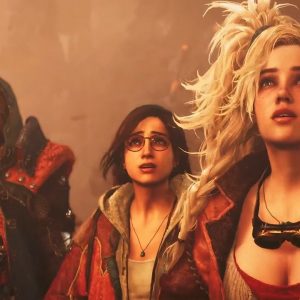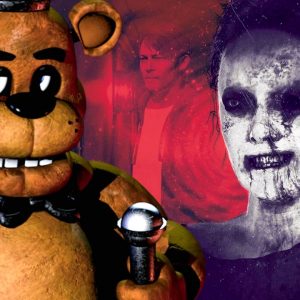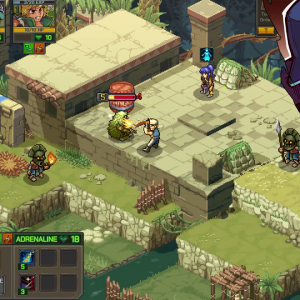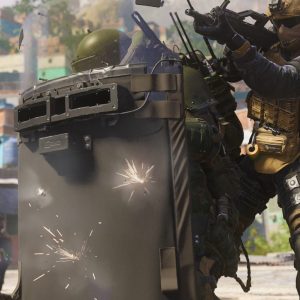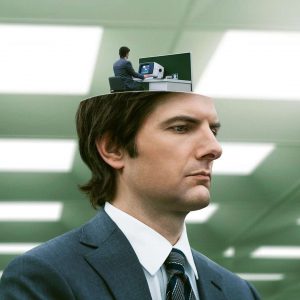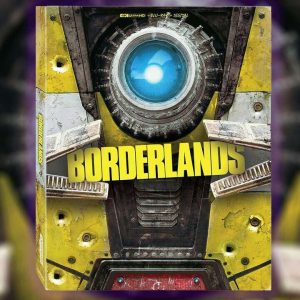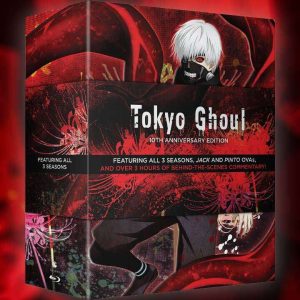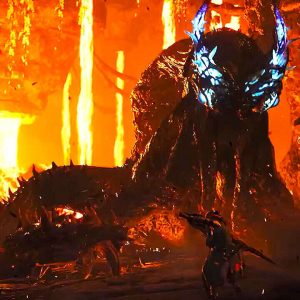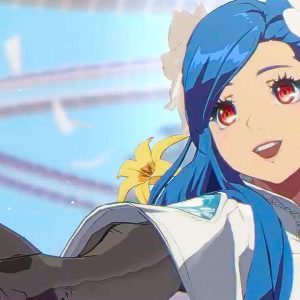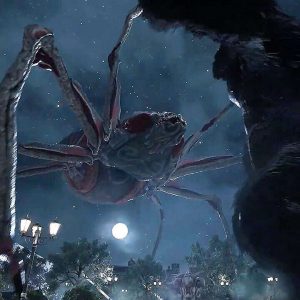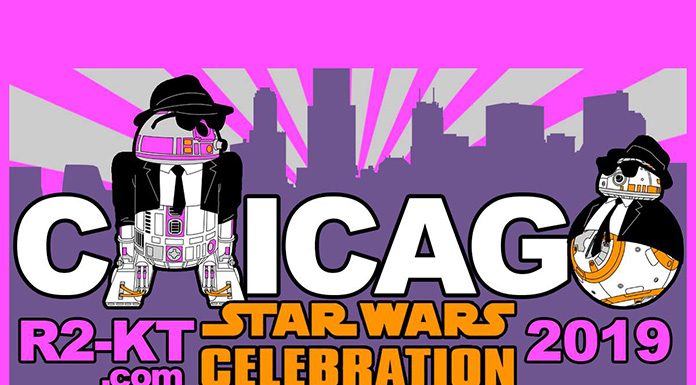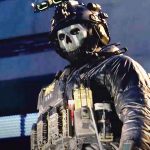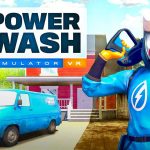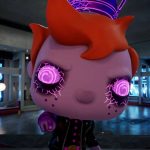Fairytale romance?
There are licensed games, and then there’s Kingdom Hearts – very probably the biggest and strangest cross-company undertaking in video game history. Over the course of almost 20 years, Square’s borrowed dozens of Disney characters and adapted them for its bonkers multiverse plotline. Kingdom Hearts 3 is its most ambitious use of Disney properties yet, from trying to create photorealistic Pirates of the Caribbean characters, while simultaneously trying to capture Pixar animation magic for the first time.
It’s such an unusual task that, in getting the chance to talk with multiple members of the game’s team, my first question was invariably “what’s working with Disney like?” The range of answers reveals a lot about how both Disney and Square Enix work, and the challenges and rewards of their ongoing relationship. Here’s what I learned.
It’s the first time Disney provided digital assets…
Kingdom Hearts 3 marks the first time a game in the series has been made up of predominantly CG movie sources, and it’s had a pleasant side effect for the developers – it’s the first time Disney has provided its own original digital assets for Square Enix to work with.
“This time around”, says character art director, Toru Yamazaki, “because we were planning on making such a high-end game, we talked to Disney about sharing resources with us. Up until now, the way Kingdom Hearts have been made is that we would watch the movies and copy the costumes as we saw them. But this time around, because we wanted to be really accurate and wanted to have everything down to the last detail completely the same we decided to ask Disney to share their resources with us.”
Disney provided the original polygon shapes of characters from its properties, with guidelines for how more detail was to be placed on top. Square Enix designers then added hair, clothing materials and more. Essentially, for characters like Frozen’s Elsa, there’s a tiny piece of the original digital model in your game, hidden under layers of added pixel-paint.
…But that isn’t necessarily as helpful as it sounds
That original model really is a tiny piece of the final result however. Disney’s assets weren’t made to be used in a game, meaning that when Square received them they didn’t quite work right away. Joints in bodies weren’t defined and had to be added manually, physics-enabled objects like capes were built for much more advanced calculations than gaming tech can handle moment-to-moment, and needed to be rejigged to stop your console from just bursting into flames. Hair proved a particular sticking point:
“Disney was very concerned with what Elsa’s hair looked like”, says Yamazaki. “Of course she’s got this beautiful golden-white hair that’s always flowing and beautiful, and when we got the data, her hair was just sticking straight backwards.”
“So we used animation initially to bring it forward, but no matter how we did that it didn’t quite look right, it always kind of looked a little weird, and Disney wasn’t happy with that. Ultimately, what we had to do, we told them, ‘with the data you guys gave us, and what we’re working with, we can’t make it look any better than this’.
“What we ended up doing was remaking the hair, not from the model they gave to us. It was the one part that was like, ‘oh this doesn’t make sense, we’re not supposed to be changing anything, but we have to change it to make it looks like it looks in the movie itself’.”
Both companies sweat the small stuff…
Naturally, both Disney and Pixar are fairly exacting about how their properties look in someone else’s game, but that goes pretty deep. Any recreation of a Disney asset has to be approved, and any change explained. As lead facial animator Kayoko Yajima puts it: “There was actually a lot of pressure to get even the smallest details that you wouldn’t even think would be that important to look like they do in the movie.”
Cutscene animators seem to have it hardest of all. Square’s animators work specifically from documentation given by the various Disney teams, but even then it might not come out precisely enough for the original creators. Yakima continues: “we get requests from Disney and Pixar like, ‘we want them to be showing less teeth here,’ or ‘their eyelids need to move differently,’ or ‘their line of sight isn’t quite right’. Of course, cutscenes are where the soul of the character comes out, so it was something that we put a lot of effort into and adjusted down to the minutiae.”
…But the crazier the change, the easier it is to get approved
In what might seem like a counter-intuitive approach, Square’s found that the more outlandish a change its wants to make to a character, the more likely it is to be approved with little fuss by Disney. The Lion King’s Simba, for example, appears as what co-director Tai Yasue calls a “fire entity”. It seems like a tall order, but Yasue says they “didn’t have a lot of difficulty.”
The point is that, if you’re changing the character enough, it’s no longer imitating Disney. “He’s not Simba”, he explains. “So we showed Disney our drawings and everything, and shared that, and we got that approved. But at the same time, it wasn’t the real character. So I think, in that respect, it was easier.”
There’s a lot of approval…
Disney and Pixar don’t just require changes once things have been made – in some cases they need to approve almost every stage of design, from concept to the finished product. Every department has its own stories of what needed to be checked, and when.
Yasue explains that, once again, cutscenes are perhaps the most scrutinised aspect of the game, presumably because they’re closest in approach to the source material: “It’s like a waterfall. You have the plot, the story, the storyboards, we get checked each time, right?” Elsewhere, the approach differs. Gameplay involves brainstorming what Disney sees as fitting for its worlds and characters, before letting the teams in question see a walkthrough of the game in action and offering comment.
For gameplay animators, every individual action is approved down to the smallest detail: “You know, we’ll program an action in and Disney or Pixar will say ‘that’s a bit too violent’, or ‘they wouldn’t do that sort of thing’,” says animation director Koji Inoue. “When it came to Remy from Ratatouille, they talked a lot about the precise movements of his tail.”
…But that pickiness helped make the game as a whole better
Disney’s work wasn’t just corrective, though – it’s collaborative, too. Inoue tells us that when Square wanted to make a Wreck-It Ralph summon that pounds the ground, and presented Disney with the storyboard, the Disney team pointed out a scene in the first film in which he does just that. It solved the problem, and brought a sense of continuity to the character between the movies and game.
The upshot of all this work isn’t just that it’s a more authentic representation of Disney, however. Some Square developers put the legendary film studio’s feedback down to helping them become better visual storytellers as a whole.
“Pixar was actually quite specific about the things that they wanted us to change,” says animation director Munenori Shinagawa, “and one of the things was line of sight. That was something that we had probably not paid as much attention to as we should have. Ultimately, we ended up doing a lot of Pixar scenes very early on in the process, and what they taught us about line of sight really helped up the quality of the animation throughout the game.”
There are Differences Between Disney and Pixar…
While Disney’s collaboration with Square began almost two decades ago, this marks the first time the team’s worked with Pixar – a Disney studio with a famously different approach to the core company. As you might expect, they don’t collaborate with Square in quite the same way.
Series creator Tetsuya Nomura says that, generally speaking, Pixar cares more about the “technical, creative side of things”, while Disney focuses more on “the overall production”. Speaking to various teams, it becomes clear that Pixar is a little more precious of its property, asking to approve more stages of production, even participating in weekly conference calls with animation teams to make sure everything is created in its image.
It’s an approach Nomura clearly empathises with: “I would say that we, as a company and a team, are more like Pixar.”
…But it’s not as simple as just ‘Disney’ or ‘Pixar’
While there’s obviously a certain amount of movement between projects, both Disney and Pixar keep teams of animators intact after their films have been released – and those teams all have a say on their work being repurposed for the game.
As Nomura points out, those teams can have different takes on the same issue. Take storylines. Some worlds in the game – like Tangled – reimagine the original movie’s plotline, where others – Toy Story, for instance – involve plots set in between the existing movies. Those decisions seem to come down mainly to the creators involved:
“For each different world we had to deal with a different team,” explains Nomura, “and [plotting] was largely down to what their feelings were on what they wanted to happen. There were some teams that were like, ‘Ooh, if you make a new story, you’re going to kind of ruin the world that we created,’ whereas there were teams, like Toy Story, who said to us, ‘Well, we can’t have it in that world, but if you want to make a new story, that’s fine.’”
Even within studios, teams could be markedly different in what they wanted from their own Kingdom Hearts world: “From team to team,” Nomura continues, “the kind of colour, or the way they did things, the feel was quite different. For example, Toy Story and Monsters, Inc., those two teams were completely different from each other.”
Pixar takes some convincing to allow changes to its work…
As explained above, Pixar’s teams in particular could be fairly exacting about what they want their worlds to look and feel like – but some decisions were subject to major discussions well before they became reality.
Nomura explains that his vision for Kingdom Hearts has always been that Sora and friends canonically arrive in Disney’s worlds. That didn’t suit the Toy Story team. “When I first brought this to Pixar and I asked about doing that, they were like, ‘Actually, no. The Toy Story story is complete. It’s a complete package the way it is, and we can’t really change that.’ I told them if I’m going to do this in the Kingdom Hearts way, then it’s going to become a case of, ‘Actually, Sora and his friends did come into the world.’”
The solution became to place the plotline between Toy Story movies (specifically 2 and 3), satisfying Nomura’s vision, Pixar’s restrictions and creating a strange extra consequence: “I said, ‘Okay, so is it fair to assume that Woody and Buzz, and friends, remember Sora and everybody coming? Is it part of the story now?’ and they were like, ‘yeah,’ and I was kind of like, ‘Oh! Okay.’”
Here’s hoping for a Sora cameo in Toy Story 4.
…but loves seeing its old stuff in a new game
Once the kinks have been ironed out, it seems like Pixar animators still aren’t over the novelty of seeing their films in a Kingdom Hearts context. It’s worth remembering that some of the films being recreated were made with technology less advanced than what Square is using.
“It was a question of, ‘even if they were made with older technology, what would they look like if they were appearing in higher quality now?’”, says Inoue. “We wanted it to look like the original, but the original in its most modern, highest technology form.”
The upshot is that Pixar got to see recreated scenes from Monsters Inc. that looked better in some respects than the original. “The feedback was always, ‘it looks so nice to have it in such high quality.’ It was actually to the extent where Pixar was saying that some people who’d seen it were saying, ‘wait are you guys making a new movie?’ Because it was exactly like it was supposed to look like.”
So yes, it might be the biggest, oddest and sometimes pickiest collaboration in games, but it might also be the most rewarding for those making it.
Joe Skrebels is IGN’s UK Deputy Editor, and he thinks any game that recreates Boo from Monsters Inc. is a successful project. Follow him on Twitter.
